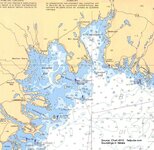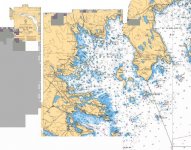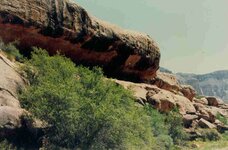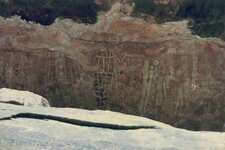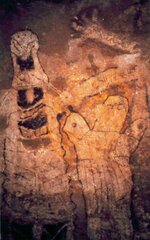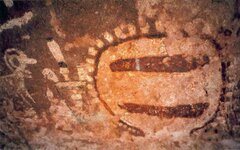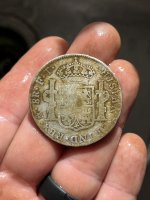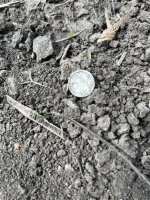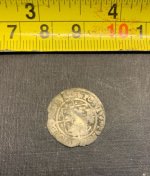gollum
Gold Member
- Jan 2, 2006
- 6,729
- 7,596
- Detector(s) used
- Minelab SD2200D (Modded)/ Whites GMT 24k / Fisher FX-3 / Fisher Gold Bug II / Fisher Gemini / Schiebel MIMID / Falcon MD-20
- Primary Interest:
- All Treasure Hunting
Also,
I almost forgot about a friend's cache find I have been allowed to share:
I have a friend that lives in Tucson. He got out of the Army in 1956. He took some money he had saved up while in the Army and bought himself a new Willys Jeep (which he still drives to this day). He, his brother, and two friends (one a prospector and one an engineer) set out to hunt treasure. The fund some smaller things over the years, but the big strike eluded him for a long time. Then in 1983, when they climbed a hill to get a good view of their surroundings, they found a large volcanic rock with some barely visible markings of lines and dots. Nearby, they found a flat stone with a cross on it. It took a couple of years before they put all the pieces together. The engineer got the big piece first. The lines and dots were Mayan Numbers. Long story short, they tried different combinations of the numbers to different lengths, and eventually came out with a large cross. They ran metal detectors over the outline of the cross and found small deposits of smallish gold bars (some 2" x 2" and some 2" x 4"). Over some time, they managed to dig 82 pounds of gold bars from that site. The story made it into Treasure! Magazine in 1986. The magazine story doesn't say that they sold the gold to a refiner in Washington State for about $500,000 ($125,000 each).
Here's what the bars looked like:
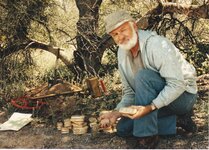
Here's a link to the entire story on my website:
82 Pounds of Gold
Enjoy - Mike
I almost forgot about a friend's cache find I have been allowed to share:
I have a friend that lives in Tucson. He got out of the Army in 1956. He took some money he had saved up while in the Army and bought himself a new Willys Jeep (which he still drives to this day). He, his brother, and two friends (one a prospector and one an engineer) set out to hunt treasure. The fund some smaller things over the years, but the big strike eluded him for a long time. Then in 1983, when they climbed a hill to get a good view of their surroundings, they found a large volcanic rock with some barely visible markings of lines and dots. Nearby, they found a flat stone with a cross on it. It took a couple of years before they put all the pieces together. The engineer got the big piece first. The lines and dots were Mayan Numbers. Long story short, they tried different combinations of the numbers to different lengths, and eventually came out with a large cross. They ran metal detectors over the outline of the cross and found small deposits of smallish gold bars (some 2" x 2" and some 2" x 4"). Over some time, they managed to dig 82 pounds of gold bars from that site. The story made it into Treasure! Magazine in 1986. The magazine story doesn't say that they sold the gold to a refiner in Washington State for about $500,000 ($125,000 each).
Here's what the bars looked like:

Here's a link to the entire story on my website:
82 Pounds of Gold
Enjoy - Mike


